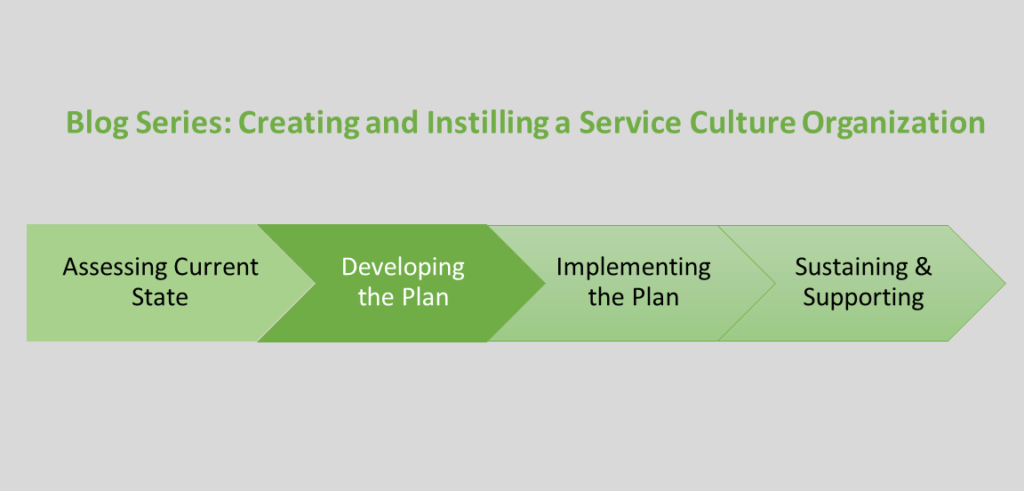
Shaping the service culture in a healthcare organization is not for the faint-of-heart. In this series we are providing practical tips for creating a training program that instills a consistent service culture across your organization. Last time we covered the first step, which is evaluating your internal capability and capacity: do you have the people and the bandwidth to do the difficult work that is before you? Once you’ve determined your approach and secured the required funding, the next step is to develop your plan.
Identify Service Culture Improvement Opportunities
Developing a solid service culture plan involves taking a holistic approach that looks at more than just patient experience data to find opportunities for improvement in your service culture. In addition to “patient voice” data (surveys, comments, and complaints), it is also important to look at any physician satisfaction and employee engagement survey data that is available to help understand the whole picture. Another approach we have taken is to administer a service-driven culture survey that evaluates how well-aligned leadership is in their commitment to and strategy for achieving a culture of service.
Armed with the information from all of these data, it is then a really good practice to pull together an Employee Advisory Council or if that is not feasible to at least conduct several employee focus groups. These groups help to go beyond what can be conveyed in a survey and delve more deeply into the issues and themes that emerge from the data.
Agree On One Set of Service Standards
At this point it is a good idea to review and assess any existing service standards in the organization. Do they still align with what the Patient and Family Advisory Council(s) are telling you is important to them? Test these standards out with the employee group(s) — do they still resonate? If so, do they need any refreshing? Are they relevant? Are they measureable? How would you hold someone accountable to them? If they aren’t relevant, starting fresh with the employees is a great place to begin.
Work with your employees, physicians, and volunteers to develop a single set of service standards in their own words that reflect patient desires. Once the service standards are developed, they can be further vetted with any Patient and Family Advisory Council(s). Gather patient and family quotes about what these standards look like when lived out in everyday practice to further support your service training efforts. Over time, service standards can be embedded into job descriptions, hiring processes, and performance evaluations.
Design the Plan to Hardwire the Standards
Then the really fun and creative part begins: engaging patients, families, physicians, and staff to help create an engaging educational plan. Often, the information to be shared isn’t totally new or overly complex. Instead, a big portion of the focus is how to best engage the hearts and the minds of those attending. “Real life” videos featuring staff and physicians as well as patients and families can help to bring the sessions to life. I love it when we are able to include as many of these voices as possible in sharing what the service standards look like when lived out. Patients and families in particular provide such beautiful perspectives on service done well and not-so-well.
An essential partner in all of this is your education department as they can help with the nuts-and-bolts logistics of getting your training out to the masses. Will training modules be offered online, in-person, or a combination of both? What experiential elements will you incorporate and how? Would it work best to have interdisciplinary groups go through training together or keep the sessions more siloed? Will the training be mandatory or just strongly encouraged? How many people being trained at a time can the facilities and other resources handle, and what is the monthly/quarterly/annual goal? How will you promote the classes and how do people register? Granted, working through the logistics of the training is not as exciting as the creative part of gathering information and developing a strategy, but both aspects are important if you want to set off on the right foot.
In the next article we will discuss implementing the plan to instill a consistent service culture across your organization.
